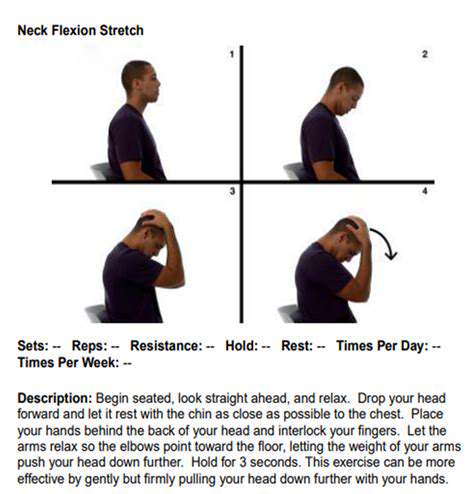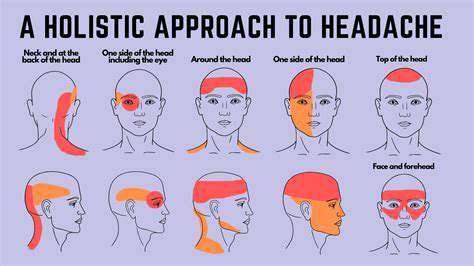Introduction to Head Pain in Workouts

Understanding the Types of Head Pain
Head pain can vary significantly from one person to another, often classified into different types such as tension headaches, migraines, or cluster headaches. Identifying the type of headache you're experiencing is crucial for effective management. Each type can have unique triggers and remedies that need to be approached differently.
Tension headaches are the most common during workouts and can feel like a tightening band around the head. They are often caused by muscle strain or poor posture during exercises. Understanding your body's signals is essential, as ignoring them can lead to chronic pain.
Migraines, on the other hand, can be exacerbated by physical exertion and may present with additional symptoms like nausea or light sensitivity. For those who experience migraines, it’s important to engage in a proper warm-up to prevent triggering an episode during workouts.
Common Triggers of Head Pain While Exercising
Several factors can contribute to head pain during physical activity. Dehydration is a leading cause; when the body lacks enough fluids, it can lead to increased tension and pain. Staying well-hydrated before, during, and after workouts is critical for preventing pain.
Another common trigger is exercising in extreme temperatures, whether too hot or too cold. Extreme conditions can lead to vascular changes in the brain, causing discomfort. It's advisable to choose the right time and environment for your workouts.
Additionally, having improper technique during workouts may contribute to head pain. Poor form can strain muscles in the neck and shoulders, which in turn can lead to tension headaches. Ensuring proper technique is vital not only for avoiding pain but also for effective training.
Preventing Head Pain During Exercise
To reduce the risk of experiencing head pain, a comprehensive warm-up routine can be highly beneficial. Gradually increasing the intensity of your workouts prepares your body and prevents sudden shocks to the system. Incorporating stretching can also help alleviate tension in the neck and shoulders, which are common sources of pain.
In addition to warm-up routines, being mindful of nutrition plays a vital role. Consuming balanced meals and snacks that include protein, complex carbohydrates, and healthy fats can support your energy levels during workouts. Skipping meals can lead to blood sugar drops, triggering headaches.
Listening to your body is equally as important. If you feel any signs of discomfort, it may be wise to take a break or modify your workout. Focus on finding exercises that suit your individual needs and avoid pushing through pain.
When to Seek Professional Help
While occasional head pain may not raise alarms, recurring episodes warrant a consultation with a healthcare professional. Persistent head pain can be indicative of underlying conditions that require intervention. Getting a professional evaluation can help rule out more serious issues.
Additionally, if you notice a pattern where head pain consistently occurs during specific types of exercises, it’s important to share this information with a doctor. They may provide tailored advice or refer you to specialists such as physical therapists or neurologists.
Finally, maintaining a headache diary can assist both you and your healthcare provider in identifying triggers and patterns. Documenting the frequency, intensity, and circumstances surrounding your head pain can lead to more effective treatments or lifestyle modifications.
Common Causes of Head Pain While Exercising

Dehydration and Its Impact
One of the most common causes of head pain during exercise is dehydration. When the body loses more fluids than it takes in, it can lead to a drop in blood pressure and less oxygen reaching the brain. This can create feelings of discomfort and headache.
It's crucial to stay hydrated before, during, and after workouts. Drinking enough water can keep the body's systems functioning smoothly and help prevent the onset of headaches.
If you tend to sweat a lot, consider replenishing electrolytes as well. Sometimes, water alone isn’t enough to stave off dehydration, especially during high-intensity workouts.
Always listen to your body; if you feel a headache coming on, it might be a signal that you need more fluids. This simple measure can significantly enhance your exercise experience.
Tension Headaches Due to Poor Posture
Another frequent trigger for head pain while exercising is tension headaches, which can arise from poor posture. When your body is not aligned correctly, particularly in activities that require strength or balance, it can lead to muscle strain.
This strain often manifests as tightness or pain in the neck, shoulders, or back, which can easily escalate into a headache.
To counter this, it's important to maintain proper form during workouts. Engage your core and ensure your head and neck are aligned with your spine.
Additionally, incorporating stretching and strengthening exercises can help alleviate tension in the muscles that contribute to developing headaches.
Environmental Factors and Head Pain
The environment in which you exercise can also play a significant role in head pain. Factors like excessive heat or strong air currents can lead to discomfort and headaches. Working out in hot, humid conditions can lead to heat exhaustion, which often presents with a headache.
It’s vital to be aware of your surroundings and adjust your workouts accordingly. Opting for cooler times of the day or using shaded areas can alleviate some of the strain on your body.
You should also consider the surface you are exercising on. An uneven surface can cause muscles to adjust awkwardly, leading to strain.
Taking the time to warm up and cool down properly is also crucial. These practices can reduce the risk of headaches and enhance your overall workout experience.
Prevention Strategies for Head Pain During Workouts
Stay Hydrated
One of the most effective ways to prevent head pain during workouts is to ensure Adequate Hydration. Dehydration can lead to headaches, particularly during intense physical activity. It is essential to drink water before, during, and after exercising to keep your body fluid levels balanced.
Consider incorporating electrolyte-rich drinks if you are engaging in prolonged or strenuous workouts. This can help replenish lost minerals and maintain your body's optimal function. Monitoring your fluid intake can be especially critical on hot days or during high-intensity sessions.
Additionally, being mindful of your hydration status prior to workouts can make a significant difference. Pay attention to signs of dehydration, such as dry mouth, dizziness, or fatigue, and adjust your fluid consumption accordingly.
Warm-Up and Cool Down Properly
A proper warm-up and cool-down routine can significantly reduce the likelihood of head pain during workouts. A warm-up gradually increases your heart rate and circulation, preparing your body for more intense exercise. This process can help prevent muscle tension and strain that might contribute to headaches.
Incorporating dynamic stretches and light aerobic activities into your warm-up can enhance blood flow and minimize the risk of injury. Similarly, a cool-down, which includes static stretching and gradual recovery, helps your body transition back to a resting state and can alleviate muscle tightness and stress.
Consistently practicing both warm-up and cool-down routines not only protects against head pain but also contributes to overall workout effectiveness and recovery. Listen to your body and adjust your routines as needed to ensure optimal performance and comfort.
When to Seek Medical Attention

Recognizing Serious Symptoms
It's crucial to be aware of the signs that indicate a more severe underlying condition. If you experience a headache that begins suddenly and is extremely painful, it may be a sign of a serious issue. Other concerning symptoms can include confusion, vision changes, or difficulty speaking.
For many, the headache might subside after a workout, but if you find that your pain is lingering or worsening, seeking medical help is advisable. Persistent headaches should never be ignored, as they can signify a range of health problems.
Evaluating Your Workout Routine
Sometimes, the root cause of headache pain during exercise can be linked to your workout routine. Factors such as dehydration, low blood sugar, or even improper breathing techniques can contribute to head pain. Ensuring you are adequately hydrated and nourished before workouts is vital to preventing such issues.
If you're a beginner, your body may not be accustomed to intense physical exertion, which can lead to tension headaches. Assessing the intensity of your workouts and making necessary adjustments can help mitigate this discomfort.